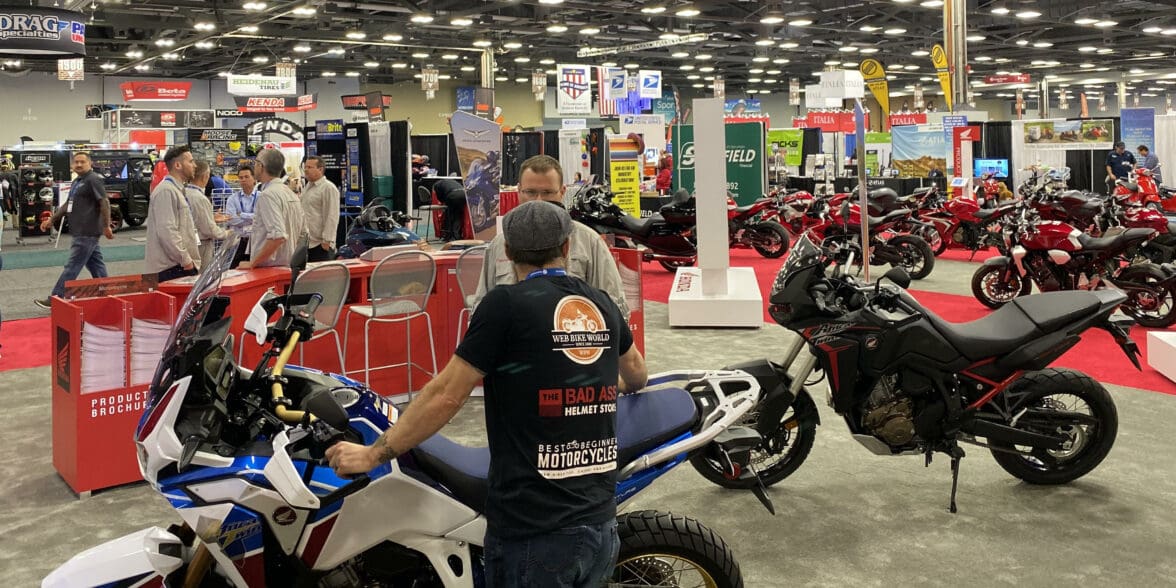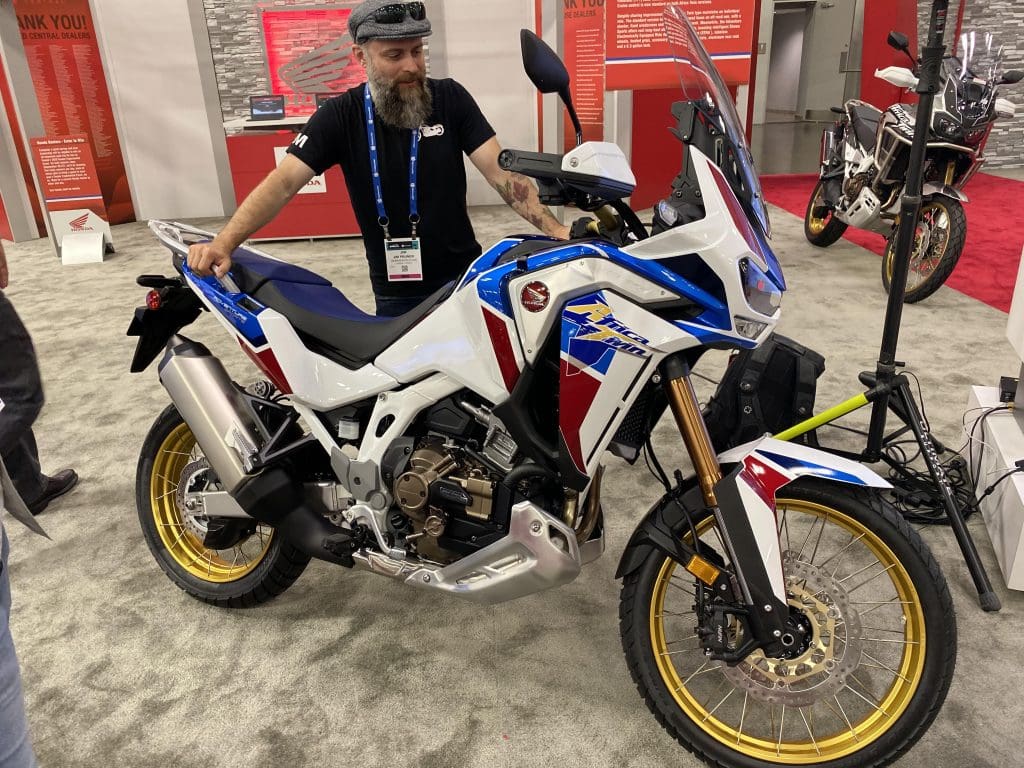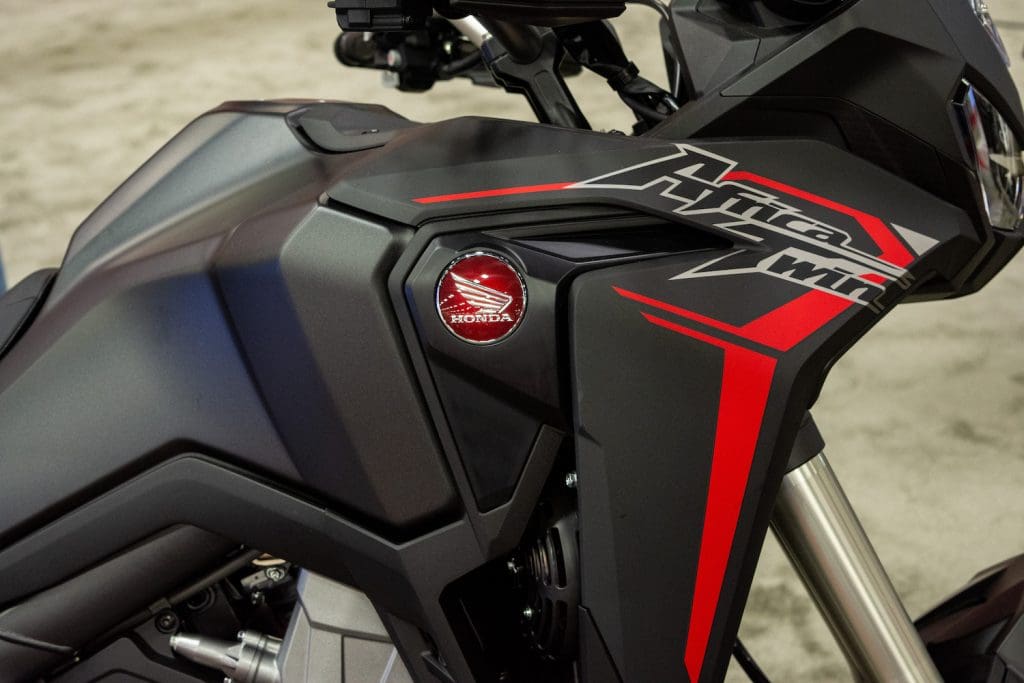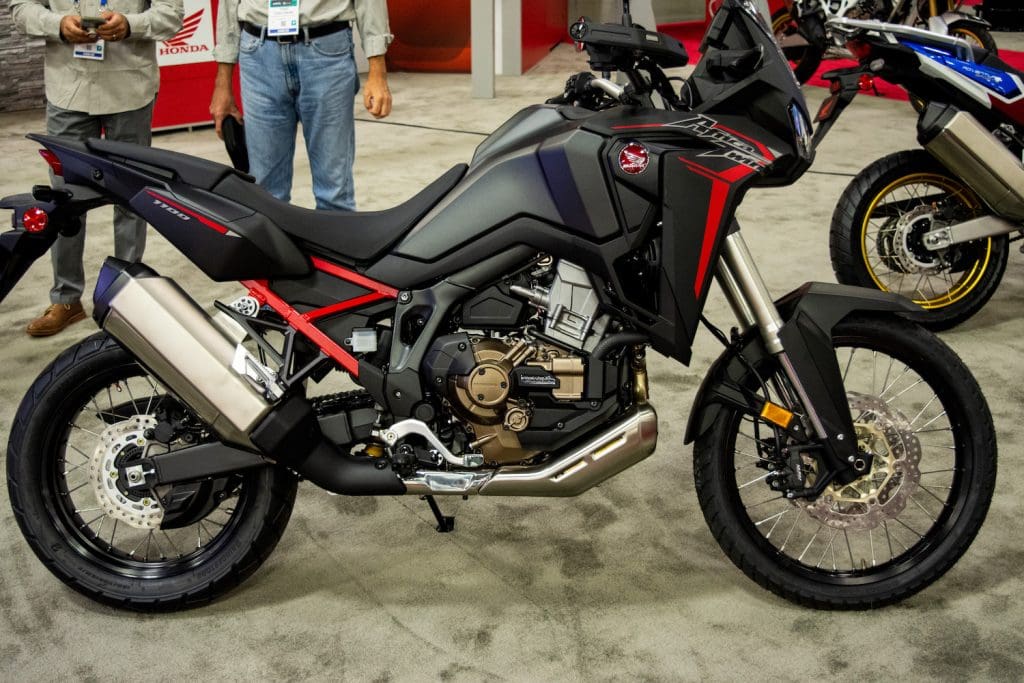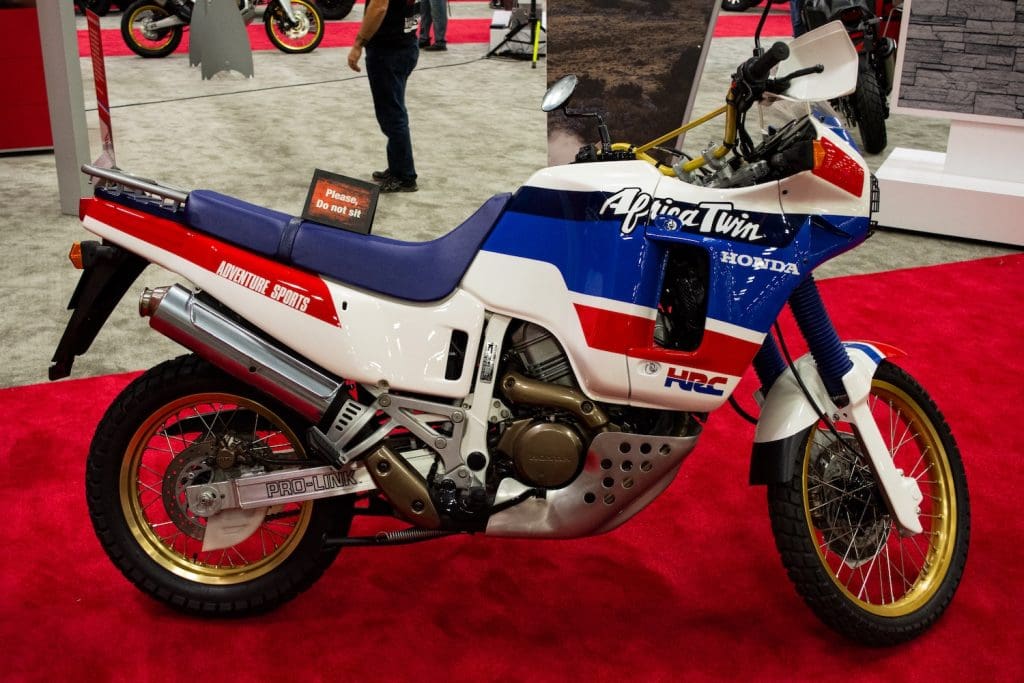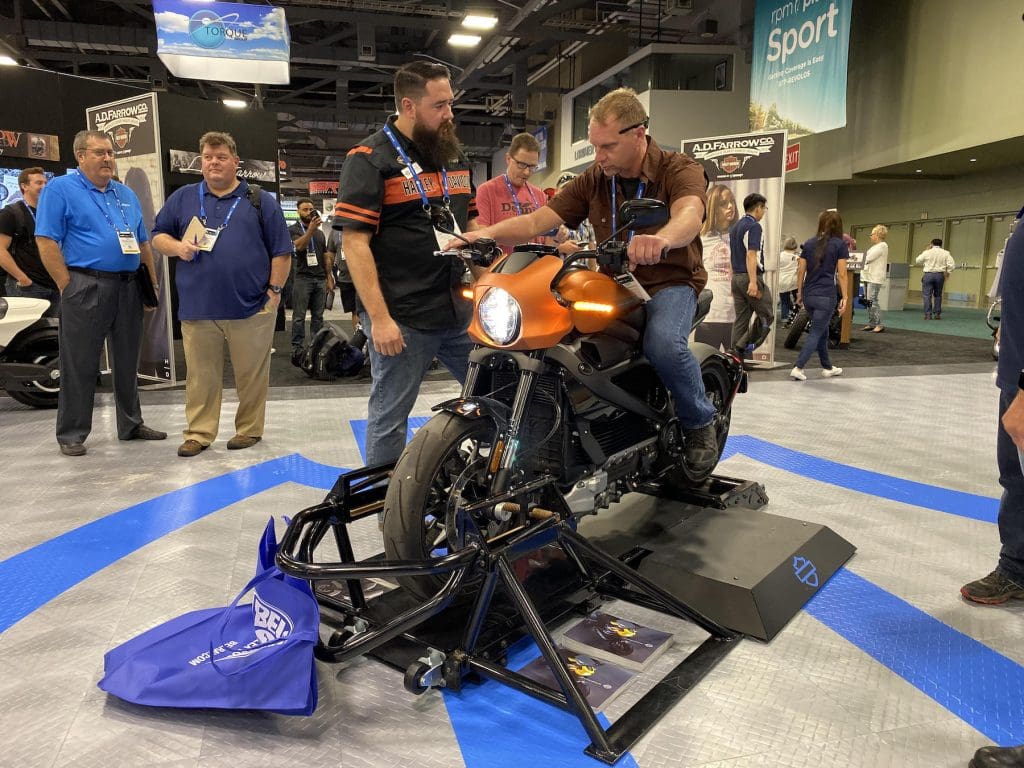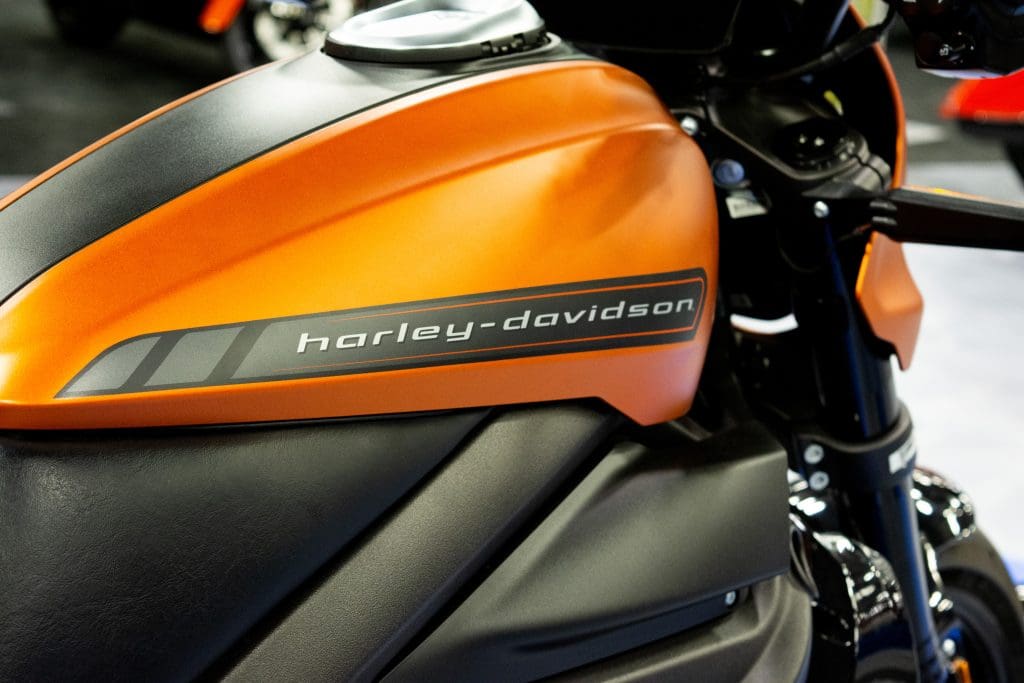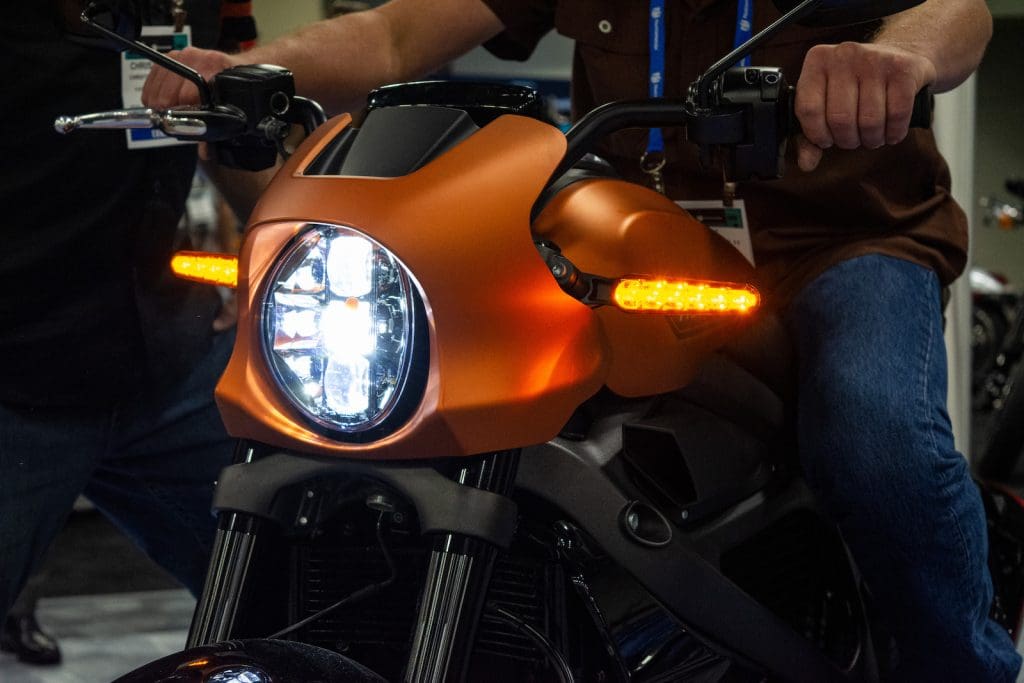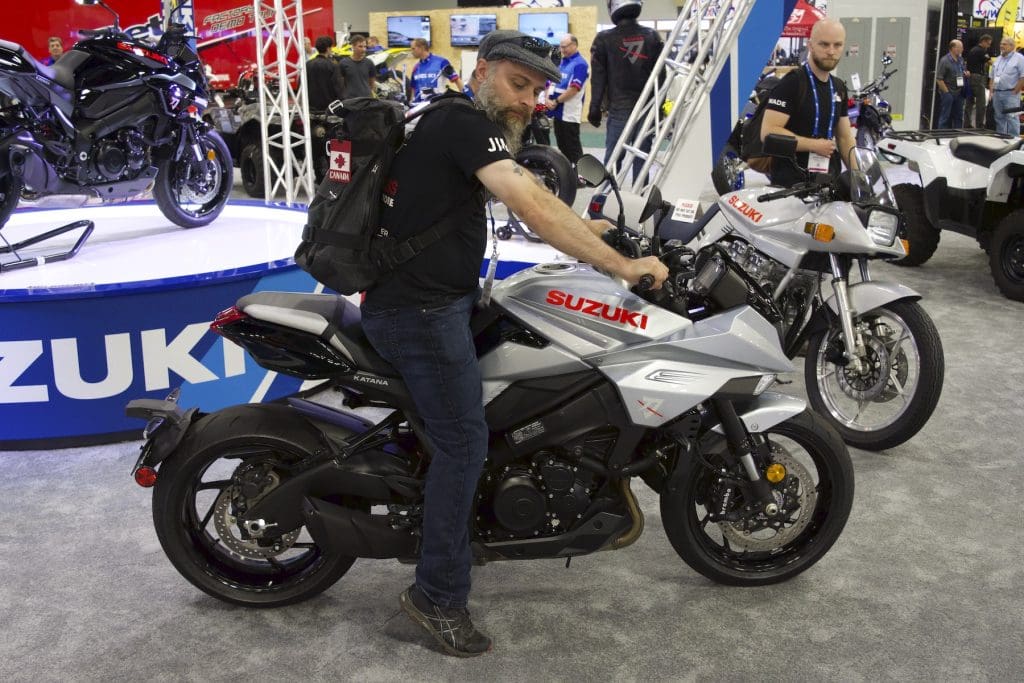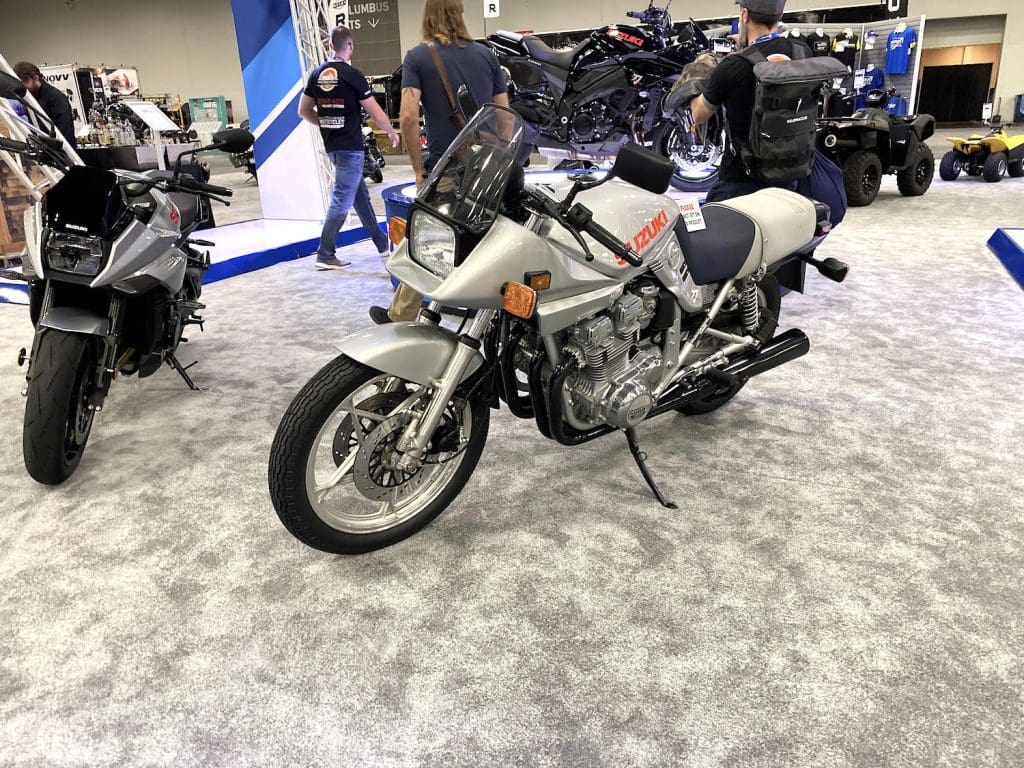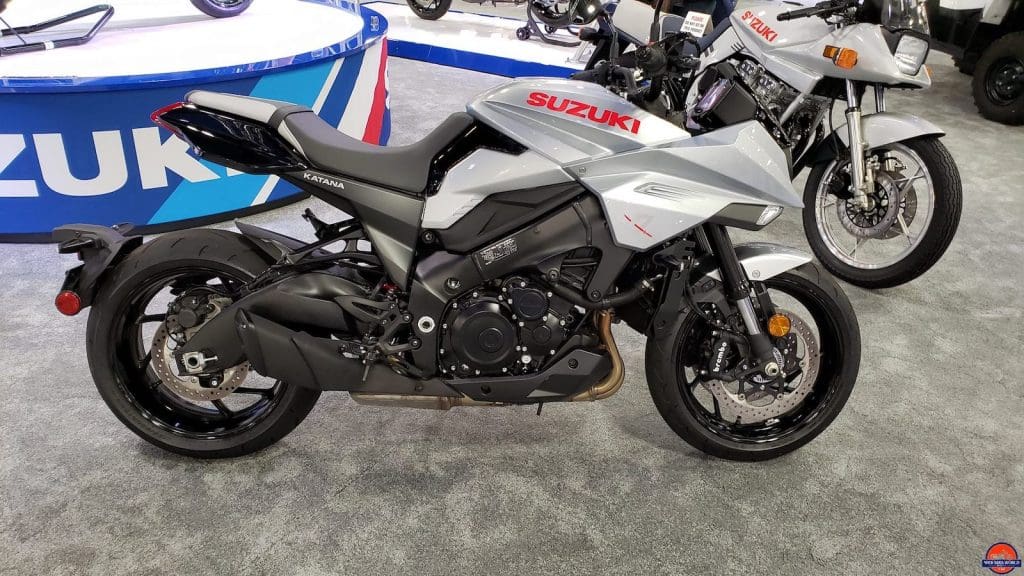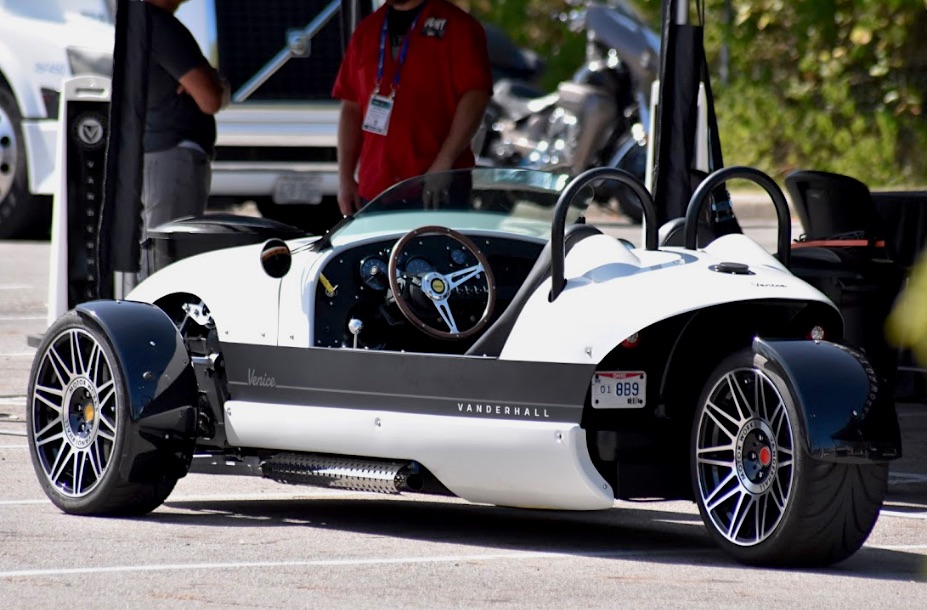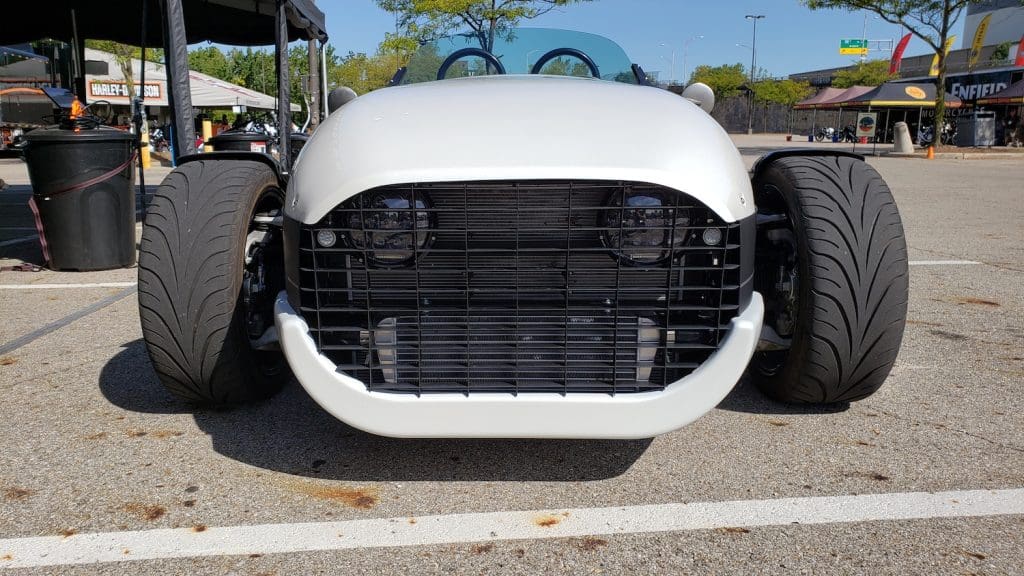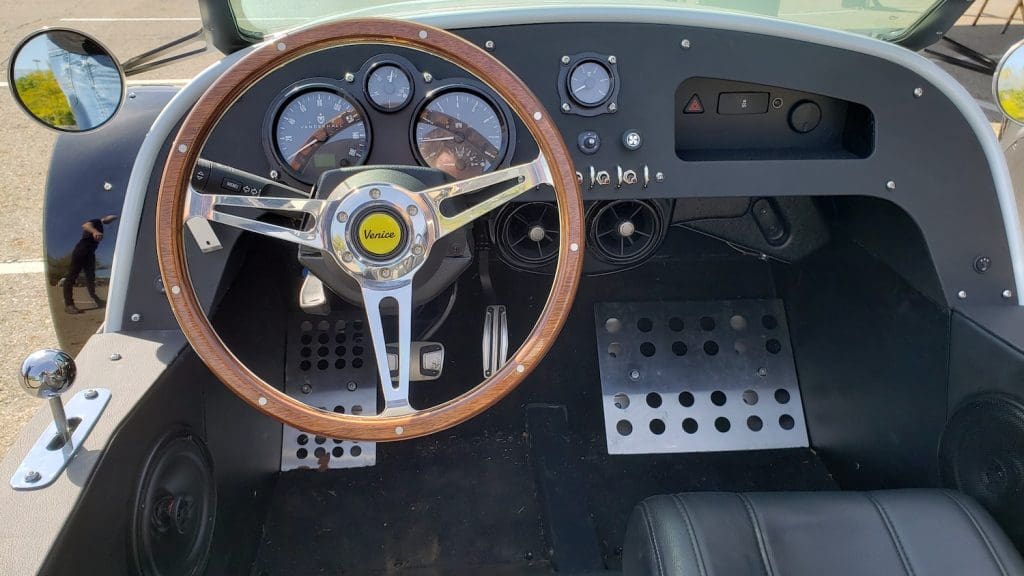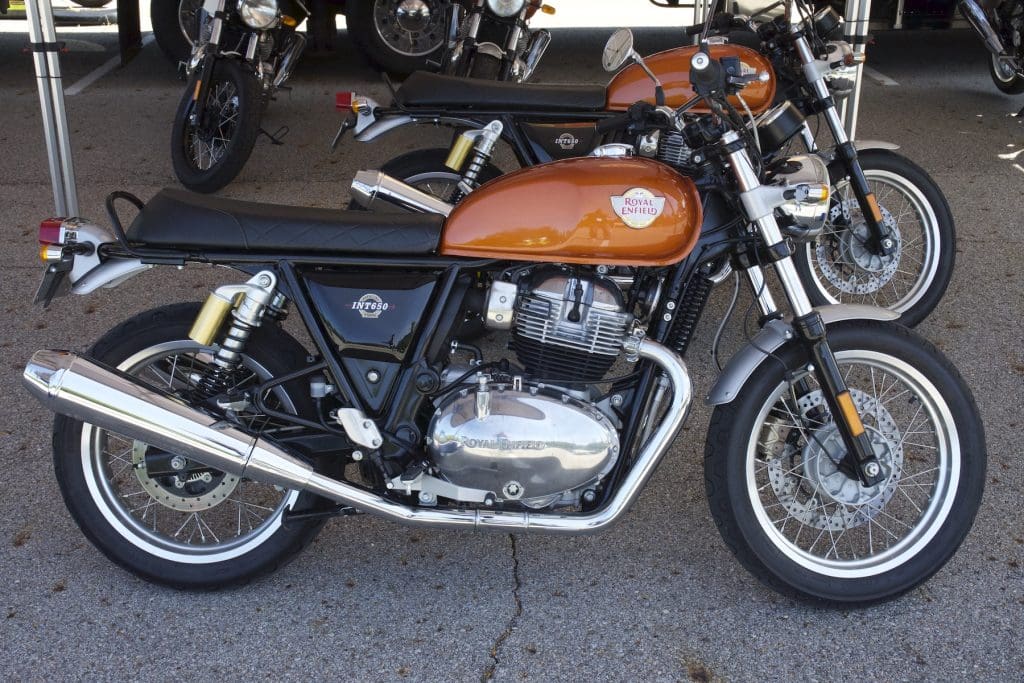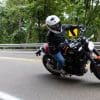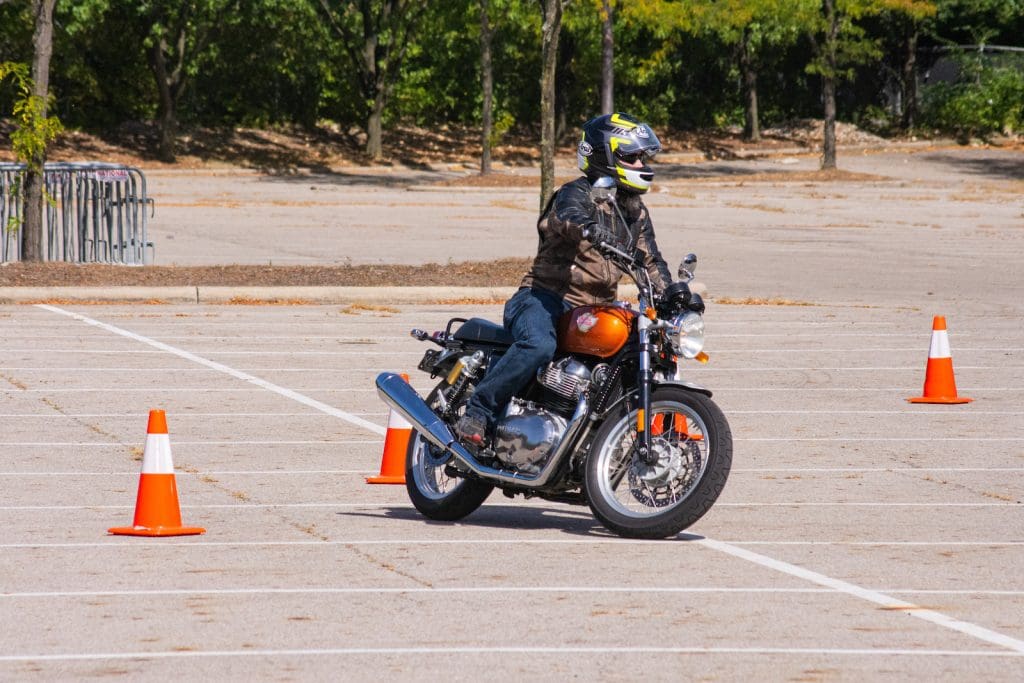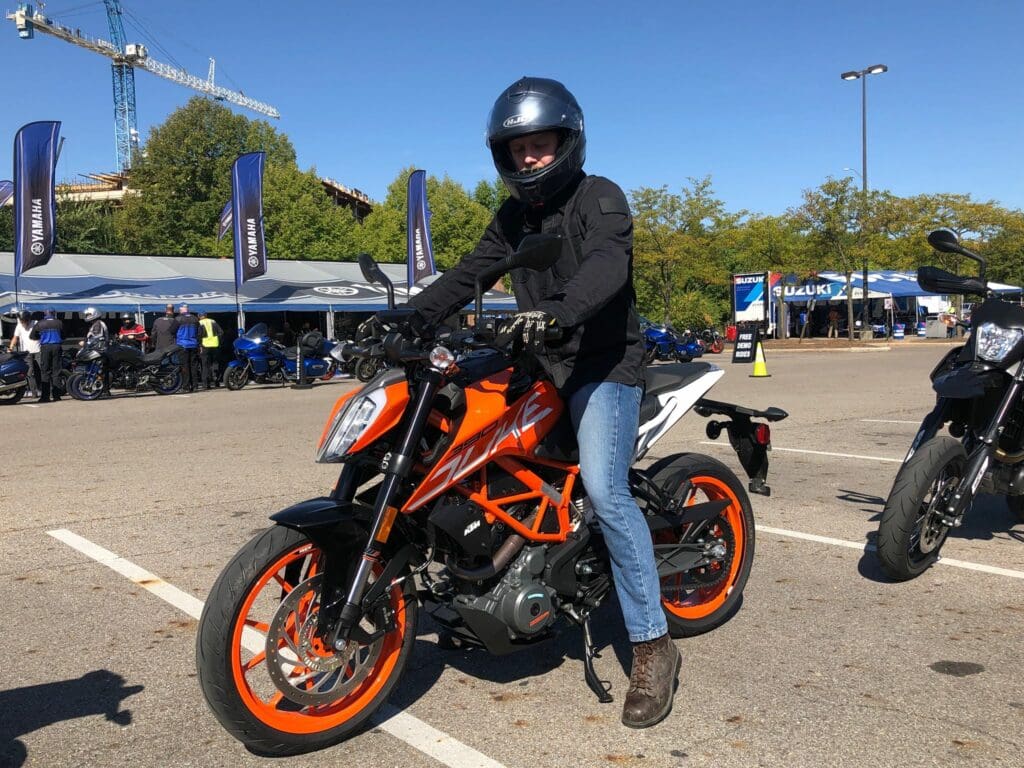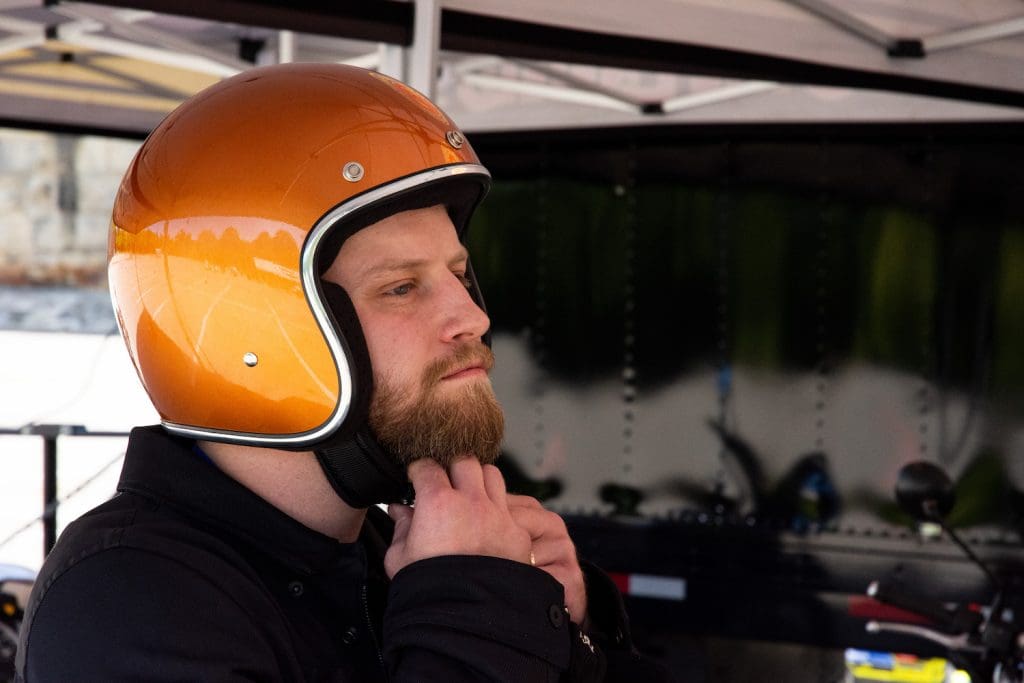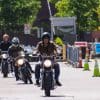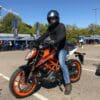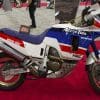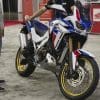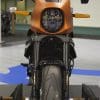Two Days at the American International Motorcycle Expo
As many of our readers know from our social media pages, we spent two days in Columbus, Ohio, at the 2019 AimExpo on September 26th and 27th. Jim, Cameron, and I did our best to connect with the right folks to get our hands on the latest gear in the coming months and for next year, and we spent some time riding a few motorcycles.
Unfortunately, Jim’s two main objectives—the Harley LiveWire and 2020 Honda Africa Twin—weren’t available for demo rides, but we did get up-close looks at both of those bikes. We also spent some time chatting with AGV, Simpson, Cake, and even giggled like 12-year-olds at the name of the new four-wheeled machine called the Qooder. But let’s focus on the big stuff.
Columbus, if you’ve never been is a true gem of the Midwestern United States. We had two beautiful days there. We spent the vast majority of our time at the convention center, obviously, but also wandered High Street and the area around the convention center. If you haven’t been to Columbus, we highly suggest making the trip, especially when there’s a killer motorcycle expo in town.
Here are the highlights of the show:
The 2020 Honda Africa Twin
Honda presented the new 2020 Africa Twin at the show. The company had two versions of the bike there, and both feature multiple updates. The bike has a new 1084cc parallel-twin engine that makes 101 hp and 77 lb-ft of torque.
The bike is a good looking machine, and Jim and I filmed a quick walkaround video of the motorcycle. Both the standard and the Adventure version of the bike can be had with a DCT. The price for the motorcycle starts at $14,399 for the standard and $17,199. The DCT will $800 to the price tag.
The bike features a new touchscreen display that will connect to your iPhone or Android to access apps and features right on the bike. There’s also standard cruise control, which is a must-have for these bikes because the folks who ride them, really ride them.
Some interesting info about the bike is that it still uses a steel frame, but the subframe is actually made of aluminum. This helps keep weight down. The Africa Twin features fully-adjustable front and rear suspension and fully adjustable seats.
The Adventure Sports model features tubeless rims, semi-active electronic suspension, a larger capacity fuel tank, adjustable large windscreen, and cornering lights.
Honda also had the original Africa Twin at the show, which was absolutely gorgeous. It was nice to see the bikes at the same exhibit so you could see how the motorcycle has changed over the years. What struck me was that Honda has really made an effort to make the new Africa Twin follow in the footsteps of the old bike.
While we didn’t get to demo this bike, you can bet that Jim will be coming out with a review sometime in the near future.
The Harley LiveWire
The Harley LiveWire was there. It was my first chance to see the bike in the flesh. Jim had high hopes that they’d have at least one for demo rides, but those hopes were smashed as soon as we got there.
The bike looks awesome in person, honestly. Cam made some cracks about it being an expensive sewing machine, and Jim griped to the Harley guy about the no demo situation, but that didn’t keep the bike from being one of the most important stops at the show.
People congregated around it and discussed the bike. It’s a conversation starter if nothing else, and I think it’ll be much more than just that for the brand. It’s a heavily flawed motorcycle in my eyes in terms of range and charge times, but it looks good, sounds interesting, and signals the way the company is shifting.
I overheard the Harley guy at the exhibit say the LiveWire has turned the company into the largest electric motorcycle manufacturer out there. If Harley can convert even half of the already interested buyers, it’ll have made a huge impact in the world of electric motorcycles.
Harley had the Live Wire on a dyno and was letting folks jump on it and see how fast it could get up to 60 mph or so. Jim nabbed a video of the bike doing its thing. The bike looks great in the flesh and sounds powerful, but it also sounds like a beefy sewing machine or blender. It’d be a little different out on the road with the tire and wind noise.
Without getting the chance to actually ride the bike there’s little more to say. It’s a $30,000 electric bike that will do 0-60 mph in about three seconds and can run a maximum of 146 miles before needing to recharge. When it does need to recharge, you’re looking at 80 percent battery recharge in 40 minutes on a quick charger. Basically, take a long lunch while waiting for your bike to recharge and you’ll have 80 percent battery.
I’ve discussed the LiveWire considerably and will be interested to see how it sells. Too bad it wasn’t available for demo rides. I think it’s too expensive and not impressive enough when it comes to range, but it’s without a doubt one of the most interesting bikes of 2020.
The 2020 Suzuki Katana
The 2020 Suzuki Katana was also at the show. This is another bike that we were unable to demo, but got to see up close and in person. The company brought along an original 1981 Katana and put the two bikes side by side. The resemblance is clear. The new Katana deserves its name, at least when you look at it.
In the picture below you can see how Suzuki really took the styling cues from the original Katana and made the most of them. The new bike looks modern, but the rectangular headlight, the front fairing, and the overall athletic shape that was engineered in the first bike remain.
We would have loved to be able to tell you if it earned that name out on the road, but unfortunately, we’ll have to wait a bit longer to get on the bike and give it a thorough review. The new katana features a 999cc liquid-cooled inline-four-cylinder engine that makes 150 hp.
The bike features a three-mode traction control system, a special Katana-themed LCD instrument cluster that fits the bike well, Bosch ABS, Brembo front calipers, a twin-spart aluminum chassis. What really sets this bike apart, though is it’s style.
This is a sporty standard bike that harkens back to the original Katana while still providing modern performance and modern features. It hits the nostalgia points hard but does so in a way that doesn’t feel contrived or like a big money grab. I loved looking at this bike, and I can’t wait to get in the saddle of one of these. It comes with a price tag of $13,499.
The Bikes We Rode
We did get to demo a few bikes. One that we didn’t demo that we wanted to was the Yamaha Niken. The Yamaha reps told Jim and I couldn’t film or take photos of the bike. This was odd because it was the media days at the show, and we thought they’d love some additional coverage of the bike. We thought that was the point of the media days. Yamaha saw it differently.
I don’t know if they had concerns about us or the bike. Jim and I were told we couldn’t film the ride or do a walkaround of the machine, so we decided there wasn’t much point in waiting around to ride it and went on our way to other manufacturers. At some point, one of us at webBikeWorld will get on a Niken and review it.
Despite the cold shoulder from Yamaha, we were able to do some fun demos. Here’s what we managed to pilot around Columbus.
Vanderhall Venice and Carmel
The first thing we rode (drove?) was the Vanderhall Venice and Carmel. I know these aren’t really motorcycles. They have three wheels and a steering wheel, but dang they’re fun.
The three-wheeled machines feature a 1.5-liter turbocharged four-cylinder that makes 194 hp. The light curb weight of the vehicle along with the front-wheel-drive power moves this machine from 0-60 mph in just 4.5 seconds. It has a top speed of 138 mph.
The handling is superb. The thing feels like it’s on rails. The steering is quick, precise, and well-weighted. The two big standouts for me were the sound of the engine and the brakes. The engine’s turbocharger whooshes whines and the exhaust howls like some kind of pissed-off animal. The sound alone made me want to own one.
The brakes are probably the most impressive part of the whole thing. The vehicle can reach a stop from 60 mph in under 100 feet, according to Vanderhall. They’re the kind of brakes that will force all the blood in your head to your cheeks.
The Venice is the smaller of the two. I drove that version, and it retails for $29,950. Jim and Cameron were in the Carmel, which retails for $39,950. The Carmel is a slightly wider version with small doors. Both are open-top machines.
I know it’s not a fair comparison, but the entire time I was thinking would I rather own this or a Harley LiveWire if I had $30k to spend. Honestly, it’d be a hard choice. The Vanderhall was a lot of fun.
Royal Enfield Interceptor 650
The first real bike Jim and I rode was the Royal Enfield Interceptor 650. The Interceptor is a pretty basic machine with a standard riding position and an old-school vibe to it. The bike features an air-cooled 648cc engine that makes 47 hp.
The bike isn’t super fast, but it’s not meant to be. Jim and I hit the road with one of the Royal Enfield guys leading the way and did a loop around Columbus. We were lucky enough to get there when not many other guys were around, so it was just the three of us.
This is a big plus because those demo rides can get pretty crowded, and it’s not always fun to ride in a group with folks you don’t know.
I was pretty impressed with the Interceptor 650. It’s a good-looking, simple machine that goes for about $6,500. The Interceptor 650 is a no-frills machine in the best way. There’s ABS and fuel-injection, but the speedo is simple, the controls are simple, and it’s just a simple middle-weight machine.
Jim and I will do a full-length review at a later date to go into detail about this bike.
KTM 390 Duke and 790 Adventure R
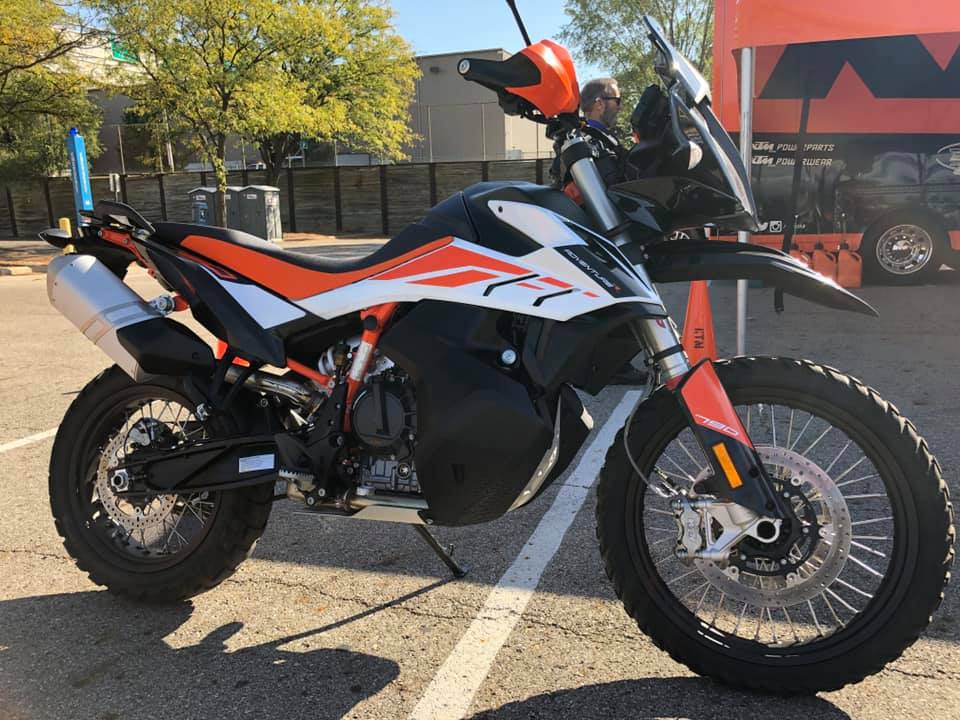

The last bikes that we got to demo were the 390 Duke and the 790 Adventure R. Jim, as you probably know if you’re a regular reader of webBikeWorld, owns a KTM 790, but he wanted to test out the Adventure R version of the bike. He posted some pictures to the Facebook page and said the following about the bike:
“The suspension is so much better overall on the R. Fully adjustable too. It handles any kind of bump more smoothly and it would be delicious off road. If the standard 790 feels like a dirtbike (and it does) then the R feels like a motocross racer from a suspension standpoint.” Jim will have a closer look at this bike sometime soon.
While Jim did his thing on the KTM, I hopped on the 390 Duke. I love small bikes, and I figured the 390 would be a pure joy. I found myself liking certain aspects like the suspension and the nimbleness of the bike, but I had some gripes about some of the other things about the bike, mainly that the digital instrument display sits too low and the short gearing keeps you too busy in city traffic. I’ll write up a full review of the bike at a later date and go into more detail.
The Cake Kalk OR and Kalk&
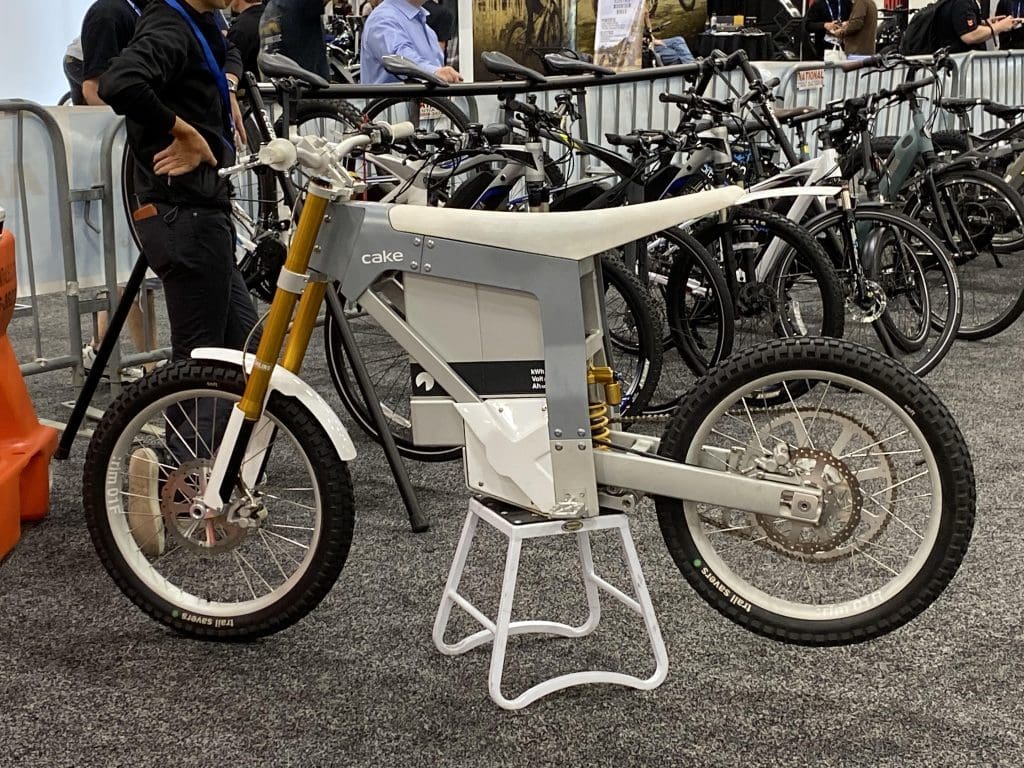

I spent some time chatting with the guys at Cake. The Kalk electric motorcycle they have is one of the more interesting bikes out there. It features a top speed over 50 mph and a range of about 60 miles depending on how you ride.
The Kalk OR is the off-road version and the Kalk& is the street-legal version. I had the chance to ride one of these bikes around a small indoor track. While I couldn’t totally exploit all that the bike has to offer, I can say it is a fun machine.
I’ll have a more detailed account of my experience with the vehicle at a later date along with plenty of photos and videos. One thing I’ll say right off the bat is that this bike appears to be of much higher quality than I originally thought. The fit-and-finish on them appears to be excellent, and while the bike isn’t the most attractive machine, it’s definitely better looking in person.
The Helmets and Gear
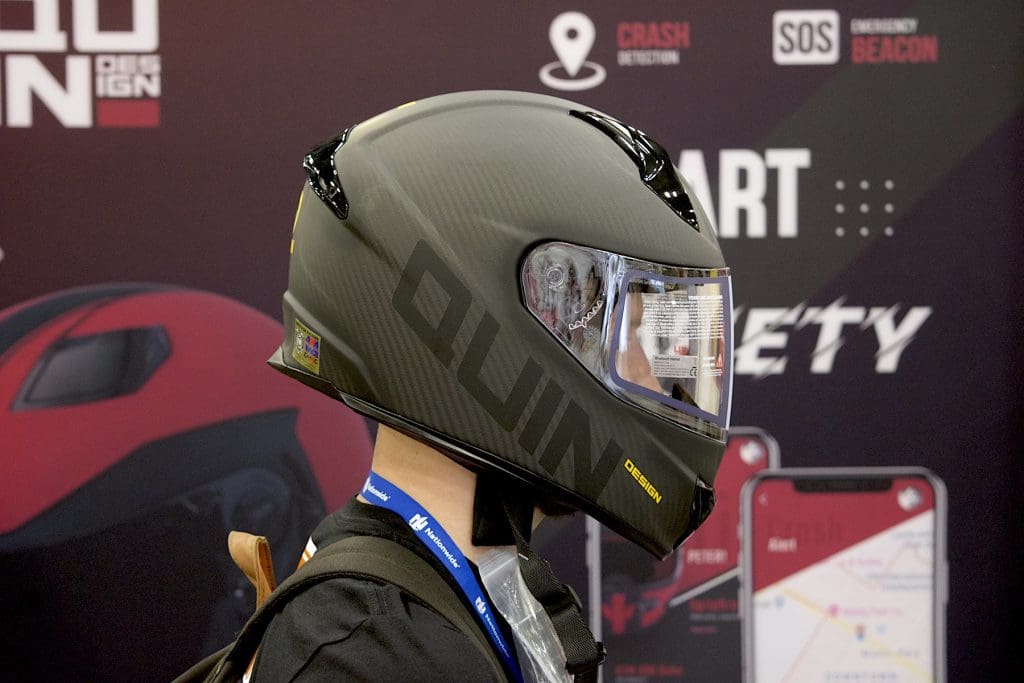

In terms of helmets and gear, we connected with several different gear companies from several different helmet companies such as Quinn helmets—the maker of a new safety-first smart helmet—to various brands that sell jackets, pants, gloves, and other riding gear like comm systems.
Unfortunately, some of the bigger brands like Shoei and HJC were not at the show this year. Rest assured we’ll be testing the latest products from these companies in the upcoming year.
We did our best to make connections with the brands that we thought you (our readers) would want to see. While there’s still plenty of 2019 left (I still should be able to get a couple of good months for riding out of this year), I think we’re in a good position to bring you coverage of all the 2020 gear you could hope to see. If you have anything you’d like to see future coverage of, definitely give us a shout. We want to review the gear that you want to know more about.
The MIC Conference
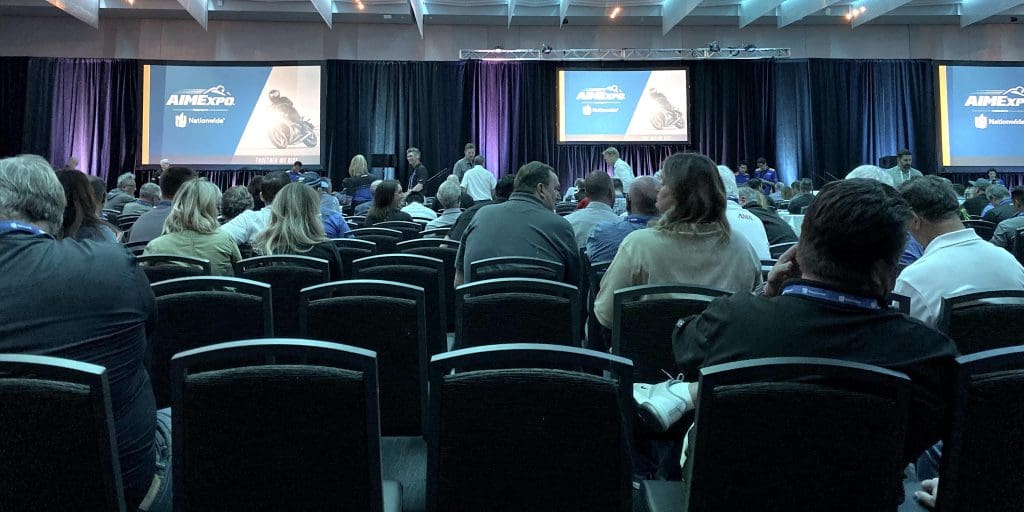

We also attended the Motorcycle Industry Council’s Conference at the end of the first day we were there. The MIC released some of the initial findings of the study conducted by Centauric LLC, an outside consulting group. The findings helped the MIC create what it calls Culture Code, which will be the roadmap for the council’s initiative to attract new riders in the long-term.
It’s no secret that many motorcycle manufacturers are looking to the Millennial generation with furrowed brows. Many in the industry are struggling to capture new riders and the MIC is working on an overall strategy with the help of those within the industry like Indian Motorcycle and Honda to work together to take the next steps towards success.
Culture Code is the first step in that journey, and it will be a long process that the MIC will have more information on it as things progress. The MIC said it didn’t want to rush things or decisions based on preconceived notions and is moving forward methodically and with the research provided by Centauric.
While Jim, Cameron, and I all have our opinions about the MIC’s approach, it’s clear that members of the motorcycle industry will need to work together in the future to make the right things happen. I look forward to seeing how this progresses.
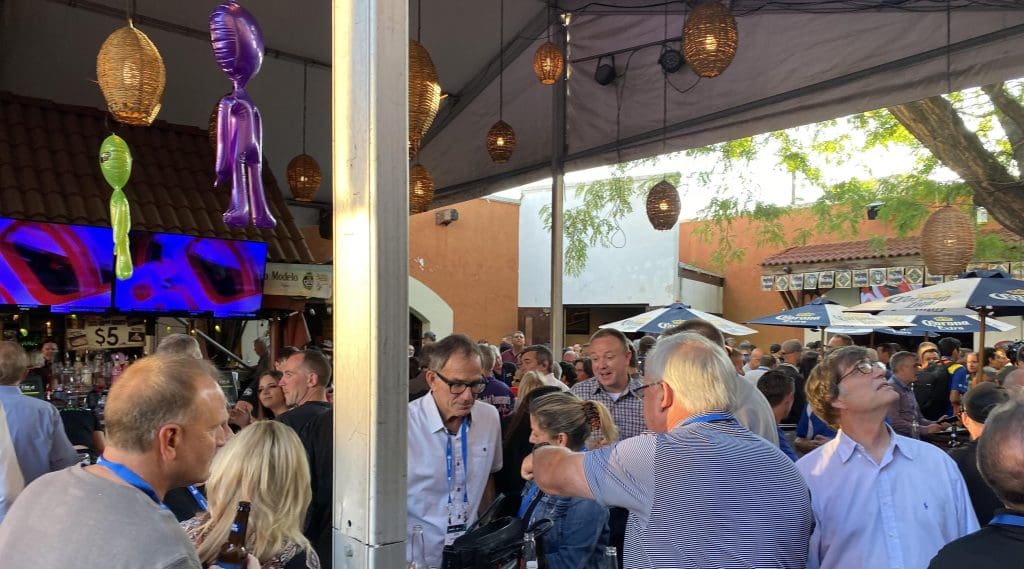

After the MIC conference, everyone met up at Park Street Cantina for drinks and a celebration of the event. It was a packed house, and it was awesome to see all the members of the show cutting loose and enjoying themselves. Jim, Cameron, and I filtered into the massive crowd there and stayed for a bit before heading off to dinner along North High St.
The 2019 AIMExpo was a success, and we look forward to stepping up our game even further next year. Below are various shots from our time at the show.


